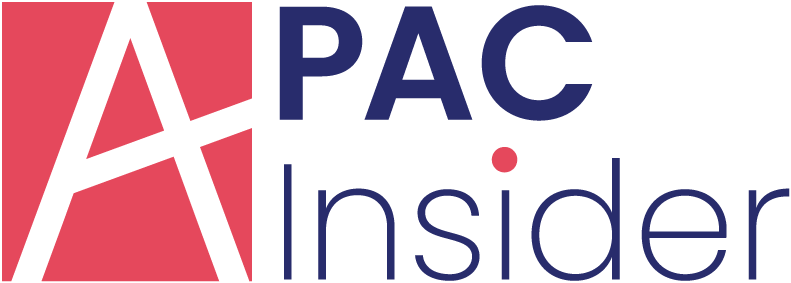
Myths and mistakes that can undermine your IP endeavors and short-circuit your valuations
By Merilee Kern, MBA
Three hundred seventy-four thousand six. That’s the total number of patents Statista.com cites were granted by the U.S. Patent and Trademark Office (USTPO) in fiscal year 2021, up from 352,066 in fiscal year 2020. This despite the pandemic’s adverse impacts on the global economy.
“The filing and issuing of patents continues to rise because companies and organizations are better understanding the significance of patents on value, and valuation, for their businesses,” says patent attorney and IP authority JiNan Glasgow George. “Indeed, crafting an efficient IP portfolio is vital to high valuation, making companies attractive to investors.”
According to JiNan, understanding patent trends can drastically protect existing intellectual property and increase valuation as businesses develop that which is new. However, she cautions that there are a few specific “business killing” myths and mistakes to be aware—and wary—of. Here are her top six.
1. Filing for Everything
Business owners who learn about IP for the first time often experience the pendulum effect: “Let’s file for everything!” You might have felt that when you picked up a book on IP strategy. By virtue of your reading this article, you’ve probably got excellent ideas that do warrant patents. But, don’t try to patent everything in your idea or prototype cache just yet, as not everything is worth patenting. It’s first imperative to discern where your best chance of ROI exists. Also, while cliché, it’s true in the IP realm: Quality beats quantity. It is better to have one huge filing with lots of detail, data and use cases rather than a dozen failed filings of just five to 10 pages each. Minimum filing requirements are not those needed to secure a patent. Even if you manage to secure a patent or trademark with a five- or 10-page filing, you may learn too late that it doesn’t cover what you’d hoped in terms of exclusivity, your company valuation, enforcement and other mission critical benchmarks.
* Do this instead: Triage what you believe to be patent-worthy IP and file judiciously based on ROI modeling. What you initially think may be most valuable IP may reveal itself to be one of lesser monetization value than other ideas in your cache.
2. Waiting Too Long to File
Make no mistake: IP filing is a race. The first person to file and get accepted wins and can shut others down, even those who had the idea in the first place. Waiting too long to file usually means the patent won’t be gained. Too many companies hedge and needlessly suffer this opportunity loss. In most cases, it’s not too late to file the patent for your new idea unless you’ve gone to market, as anything already being bought and sold is ineligible for a patent. However, not receiving a patent doesn’t have to be the end. Chances are you already have new IP candidates related to the initial concept. Asking yourself questions like, “What’s the next generation of my idea?” and “What new features and functions have been planned but not deployed?” can spur fresh IP contenders.
* Do this instead:Get all of your “ducks in a row” and file as soon as possible. This to avoid the completion and better navigate unforeseen obstacles that can delay, or entirely derail, an approval. If investor funding is relevant to the project, note that you carry a fiduciary responsibility to be prudent.
3. Do-It-Yourself “DIY” Filing
Even for someone as expert in this field as myself, I don’t even do my own contracts and securities work. While I certainly can, I don’t. Instead, I choose to do this work through a law firm because the stakes are high. In short, it’s just too important for me to risk missing an important line and lose everything. If you’re going to take other people’s money at some point, get a lawyer. Beyond the risk of severe loss, without an IP attorney you may still waste your time and money—even for something as seemingly fundamental as starting an IP filing yourself. I’ve been privy to insights from lawyers revealing that each time a new IP client comes in and states, “I wrote and filed this myself,” the law firm has to charge double just to undo what’s already been done. Plenty of great writers connect with me to fix their mistakes, but all too often it’s when their patents or trademarks have been rejected. Wasted time, wasted money. What’s more, responding to a rejection isn’t usually enough as, most often, a complete redo is required. Such delays and overhauls cost extra time and money.
* Do this instead:Secure apt representation. Hiring a lawyer with extreme process knowledge can save you time, money and thwart avoidable opportunity loss.
4. The Ownership Assumption
Who owns your intellectual property? It seems reasonable to assume that, if you create it, you should own it. But what if you hire someone—an employee, contractor or vendor—who also works on your invention prototype? Who built your app? Who designed your company website? Assuming IP is inherently “yours” may land you in a sticky situation, as happed with a high-tech life science data company that reached out to me for assistance. The company developed testing protocols and algorithms unique to their business. The technology served to automate the way they did things: Streamlining employee workflow; improving productivity; and, as a result, increase revenue and profit. They hired a third party to develop the necessary software, but they failed to ask an IP attorney to review the contract. The executive team assumed that, by paying for the software development, the company owned the deliverable. Unfortunately, once the software was finished and deployed, the company caught a rumor that their vendor tried to license the software to their competition. In reviewing the development contract, I found that they had failed to include an “assignment” clause. Though they had conceived it and had it built from scratch, this client had, in writing, simply agreed to purchase a license to the finished software they had commissioned. All they got was a license. While some would regard this as sneaky and unscrupulous on the developer’s part, it’s also a failure on the part of the party who contracted that work for a lack of due diligence. All terms must be read and wholly understood before signing on the dotted line. Otherwise, what’s yours may become theirs—even if you conceived and paid for it.
* Do this instead: Do extreme diligence on contract review and, optimally, seek legal assistance to assist with agreement provision vetting. Making assumptions on what may seem to be a common-sense engagement can prove to be fatally flawed thinking—and legally binding mandate related thereto.
5. The Get-Rich-Quick Patent Fantasy
What if one patent resulted in $1 million in revenue? Many people have that quick hit fantasy and treat patents like million-dollar lottery tickets, erroneously thinking that if they file, they’ll automatically “win.” As with the actual lottery, however, the odds are stacked against this. Within most companies, creating a product or service that enjoys exclusive rights or IP licensing to others fails to earn any notable level of ROI some percent of the time. Not all patents or IP assets are quality enough to have value in the marketplace. In truth, most patents are half-baked and poorly researched, if at all, and not well filed. The invention may also not be perceived as valuable in the marketplace.
* Do this instead: Stay realistic. While it may be patentable, it may not be profitable because there isn’t an addressable market willing to pay for that solution. Even the best inventors must often go through multiple iterations before they find the right idea that is both patentable and will serve a demonstrated marketplace need.
6. Assuming Patents Alone Protect
Did you know that having a patent does not prevent competitors from suing you for infringement? Most inventors don’t know or fully understand this risk, often finding out only when they’re the one receiving the dreaded Cease and Desist letter. It’s key to conduct clearance research to identify other companies’ patents that should be considered in the design process to ensure your own products or services avoid infringing on the claims and IP protections of others. If you’re in a highly competitive space where many companies obtain and flex IP, you need to be aware of clearance—even if you don’t pursue patents.
* Do this instead: Execute clearance research forthwith. The earlier in the product development timeline you conduct this clearance research, the easier it will be to design around other patents. It’s much harder to resolve an issue once you’ve launched your product, perhaps with the financial backing of other third parties, and then receive a legal notice.
According to JiNan, one of the most significant areas of opportunity loss for inventors, entrepreneurs and corporate executives is a lack of understanding of patent filing strategy and dynamics. Since patents are often the highest value intellectual property assets, she asserts that taking a measured, professionally advised and risk-averse track can is best.
Said to serve as “the lifeblood of innovation,” aptly procured patents can proffer a remarkable return on investment—especially when facilitating market, category or process exclusivity. Heeding these warnings above can be a powerfully effective means toward this end.




















